الجمعة, يوليو 14th 2023
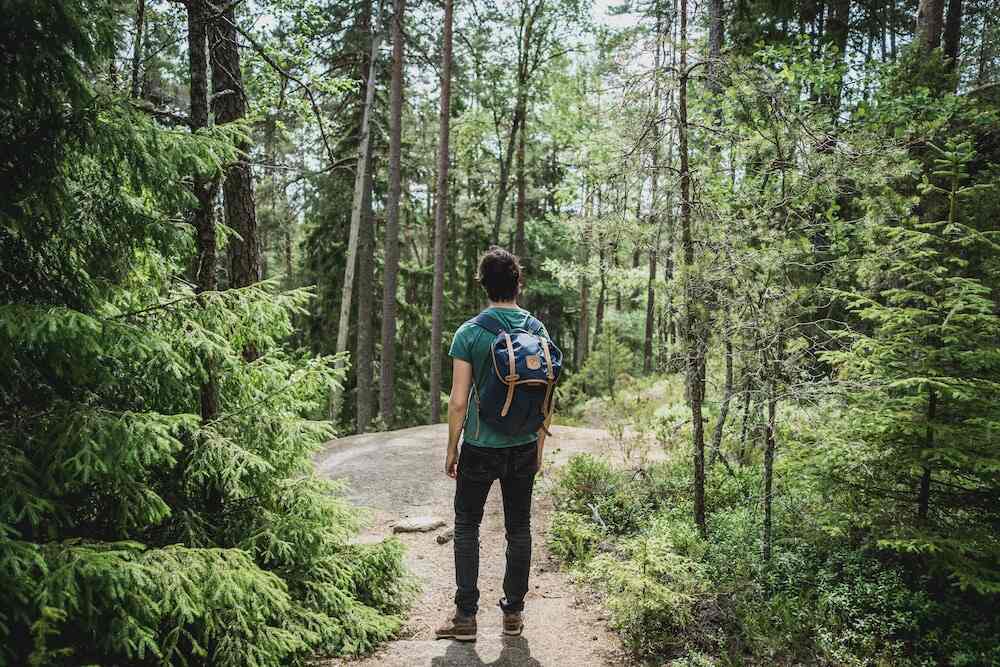
The Swiss are among the healthiest, happiest, and longest-living people in the world. According to a new Europe-wide report by the المكتب الإحصائي الاتحادي (FSO), the Swiss say they also feel the healthiest. In fact, 85% of the population reports feeling happy.
While the nation’s stable economy, access to healthcare, and good education contribute to positive health outcomes, one compelling reason Switzerland is consistently considered one of the healthiest nations in the world is people’s close connection to nature.
Research shows that people who are more connected with nature are usually happier and more likely to report feeling their lives are worthwhile. Time in nature can generate positive emotions, like relaxation, joy, and creativity, and can facilitate concentration.
And Switzerland is a nation of nature lovers. Being outdoors is a huge part of Swiss culture, as reflected in outdoor clubs like SAC and excellent public transportation even to remote locations.
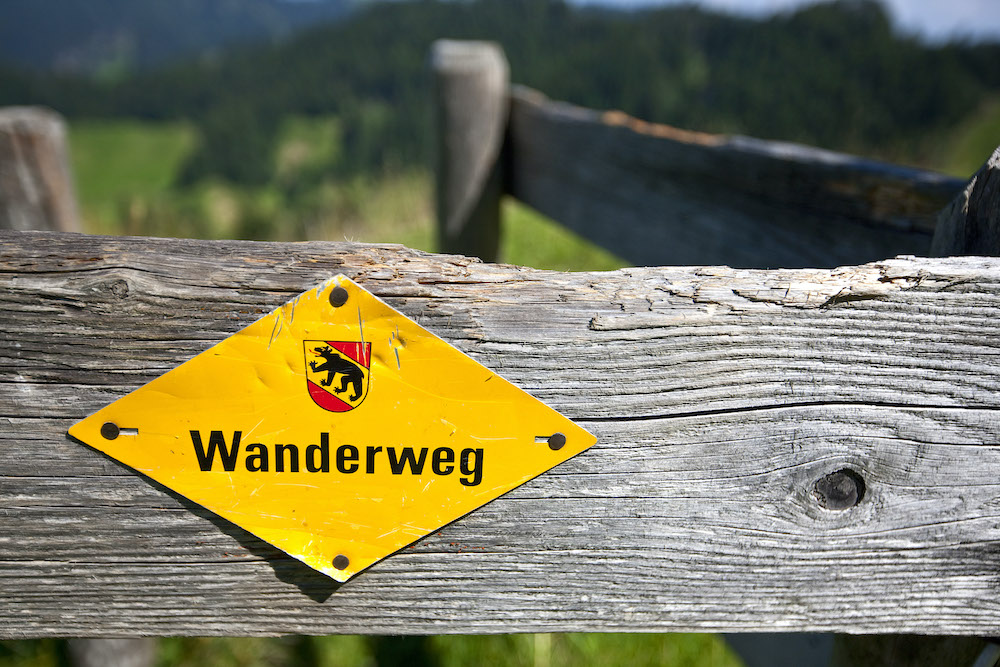
Some 57% of Swiss residents labeled themselves as walkers in 2019, going on approximately 15 walks per year for an average of three hours each, according to the Federal Office for Roads (ASTRA). This amounted to a total of 200 million hours of walking for pleasure throughout the year, ASTRA said.
Switzerland also has over 65000 kilometers of waymarked trails, making it possible to explore virtually every corner of Switzerland by foot or bike. And these trails are well-trodden. More than half of the Swiss population participates in hiking regularly. Research shows this amounts to up to 60 hours of hiking per person each year.
Read more about Switzerland’s hiking culture.
While hiking may be the Swiss’s favorite way to enjoy the country’s landscape, Swiss people are also embracing an alternative way to spend time outdoors called forest bathing.
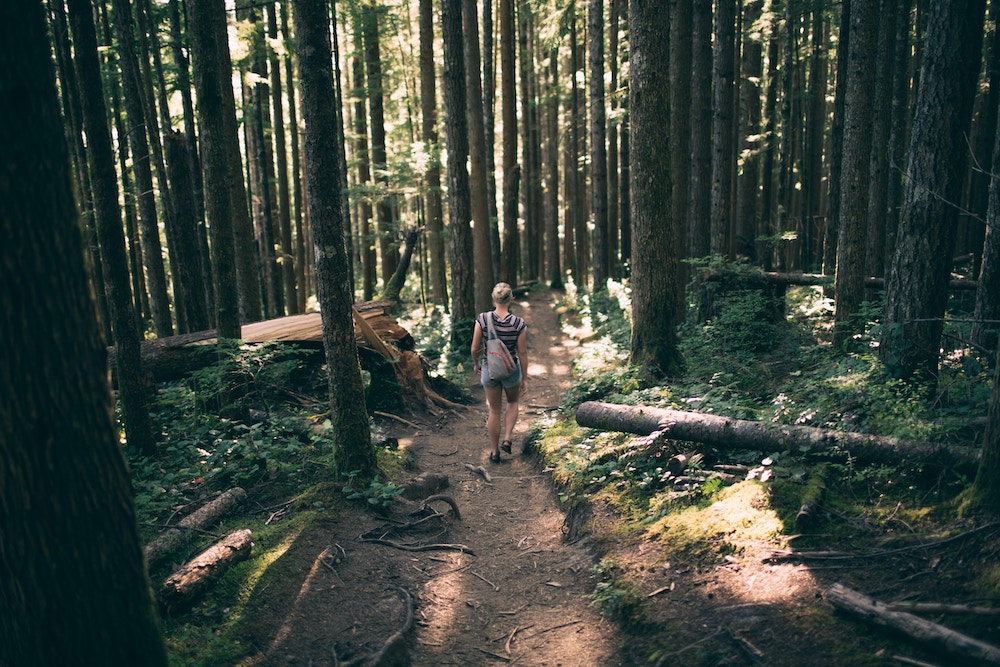
Forest bathing, also known as shinrin-yoku, involves immersing oneself in the natural environment of a forest and mindfully engaging with the sights, sounds, and smells of the surroundings. In the last decade, it’s become increasingly popular among those looking to mindfully engage with nature for therapeutic purposes.
As Swiss Forest Bathing Guides explain, “The authentic experience is not a walk in the forest or mindfulness simply leads in nature. Nature is a partner, not a destination. Through the relationship, you discover what “medicine” the forest offers for you—reconnection, reciprocity or renewal. Forest bathing events offer time to slow down, get present, and be surprised by nature‘s gifts.”
Forest bathing, as an official practice, started in the 1980s when it became a part of Japan’s holistic preventive healthcare. At the time, the government was looking for an antidote to the stresses of big-city life and a way to provide value for Japan’s vast forests beyond logging. (Over 70% of Japan is covered in forests).
Research followed to understand the science behind why being in the forest can improve our well-being. Professor Yoshifumi Miyazaki, the author of Shinrin-yoku – the Japanese Way of Forest Bathing for Health & Relaxation, took on the challenge of scientifically explaining what humanity innately knows— that spending time in nature is good for our brains and bodies.
Miyazaki’s peer-reviewed research showed time in a forest has a significant positive effect on the human immune system and relieves symptoms of stress and burnout.
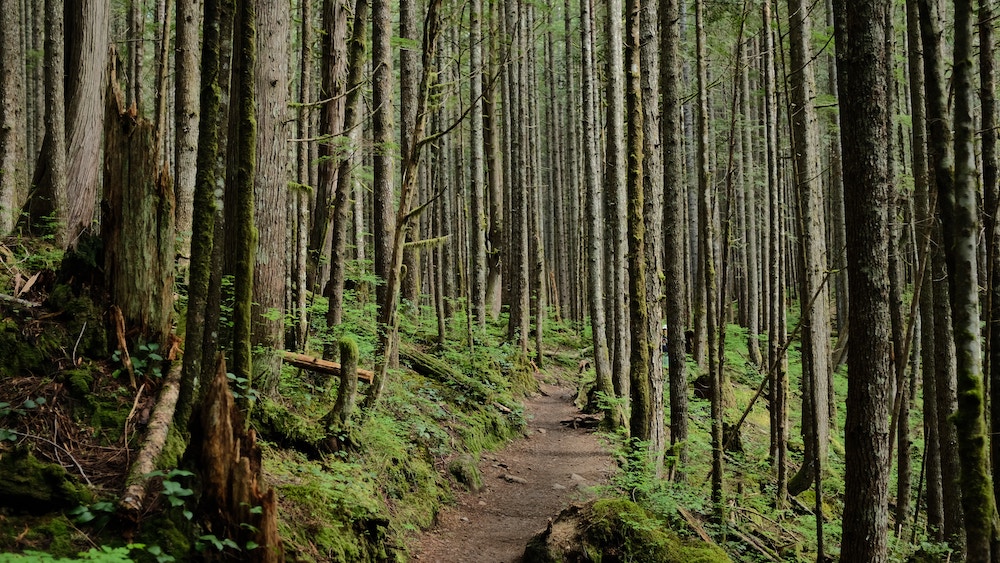
The mind-body benefits that researchers uncovered were even more compelling than anticipated: spending time in nature mindfully not only lifts our spirits and alleviates stress, there are actual physical changes that occur when we spend time in forests.
The positive emotions we experience when surrounded by natural beauty can increase our levels of anti-inflammatory cytokines, the proteins that transmit messages that boost our immune system.
Moreover, evergreens, like the native spruce and fir found in Switzerland, release a high concentration of phytoncides. Phytoncides are essential oils that help trees defend against damage from insects, fungi, and bacteria.
For humans, breathing the air in evergreen forests can stimulate our natural killer cells, which are responsible for targeting and eliminating virus-infected and tumor cells within our immune system. As Charlie Hall, a Texas A&M University professor, explains, “Evergreen trees are great producers of phytoncide, a chemical that increases natural killer cell activity.”
A study by Dr. Qing Li of Tokyo’s Nippon Medical School found after three days and two nights in a forest, participants’ natural killer cell activity increased by 53.2%, and killer cell numbers increased by 50%. Other anticancer protein counts also increased significantly, from 28–48%. These increased levels continued for as long as 30 days.
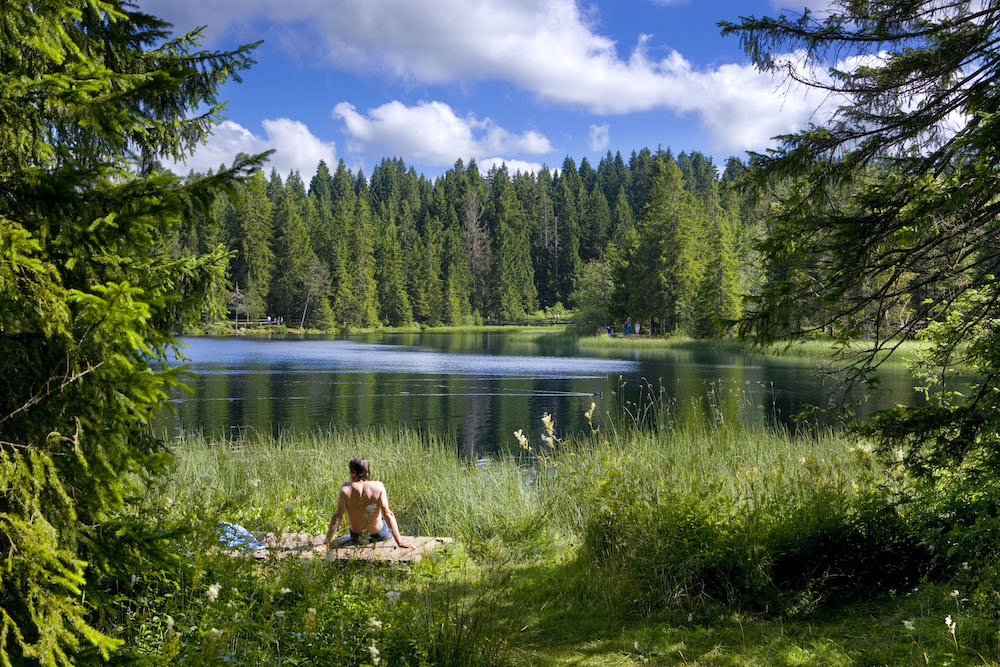
The good news is that Swiss forests are full of evergreens. The National Forest Inventory (NFI) reports that up to 31% of Switzerland is forested, and these forests are full of conifers, primarily spruce and fir. The health benefits of a phytoncide “shower” can last for weeks. And in Switzerland, forests are incredibly accessible, even for wheelchairs.
While the benefits of forest bathing, mental and physical, are compelling, the practice is less complex than the science. The practice can take on very different forms, but it’s always about being in nature, immersing yourself in it, and perceiving it with all your senses.
But forest bathing can also be as simple as walking in any natural environment and consciously connecting with what’s around you. Studies show that spending as little as 20 minutes a day outside helps to reduce stress.
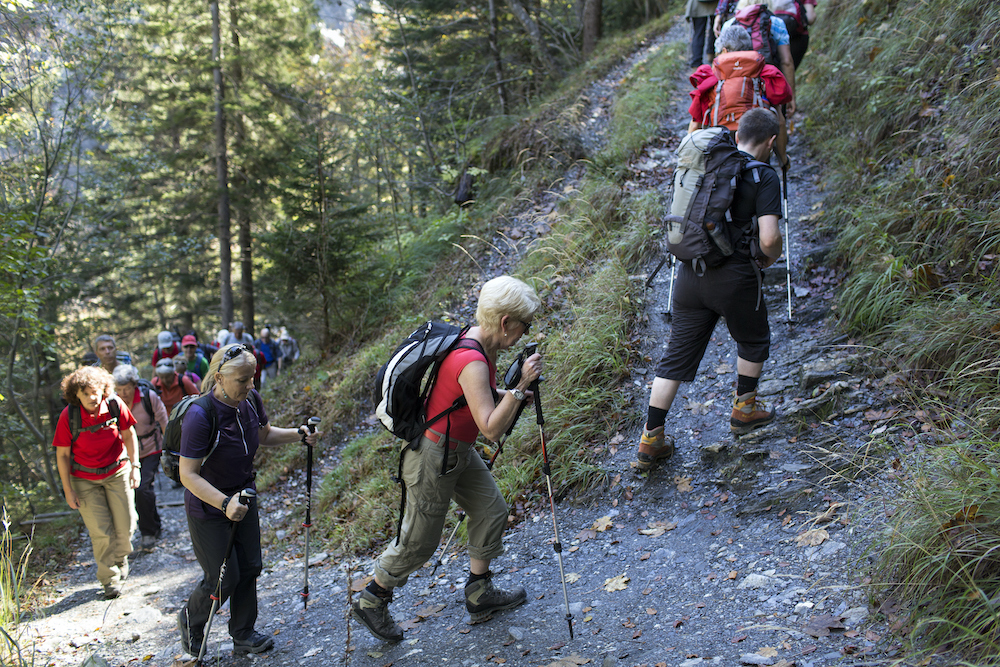
If you’re looking for a more structured approach to the practice, you can try guided experiences like the ones offered by Swiss wellness hotels or those offered by Forest Bathing Switzerland’s certified guides.
My Switzerland, the Swiss tourism website, is also a great resource. It lists wellness hotels with forest bathing packages and has many suggestions on where to forest bathe.
Although it may be a while before forest bathing is prescribed by Swiss doctors, as it is in Japan, the bounty of benefits it offers makes it a worthwhile pursuit. Forest bathing bridges the gap between ourselves and nature, bringing our minds, bodies, and spirits back into harmony with the natural world.
Feel free to share this article so long as it prominently links back to our site.
